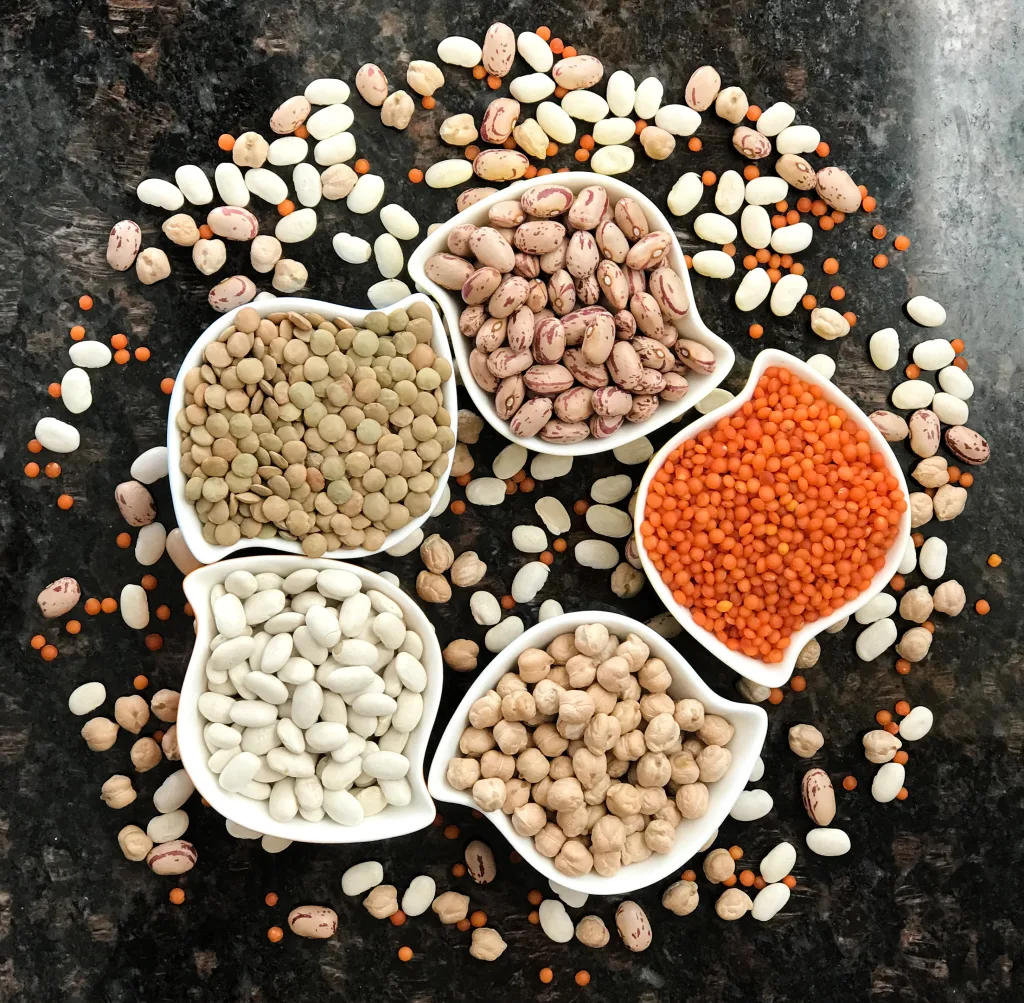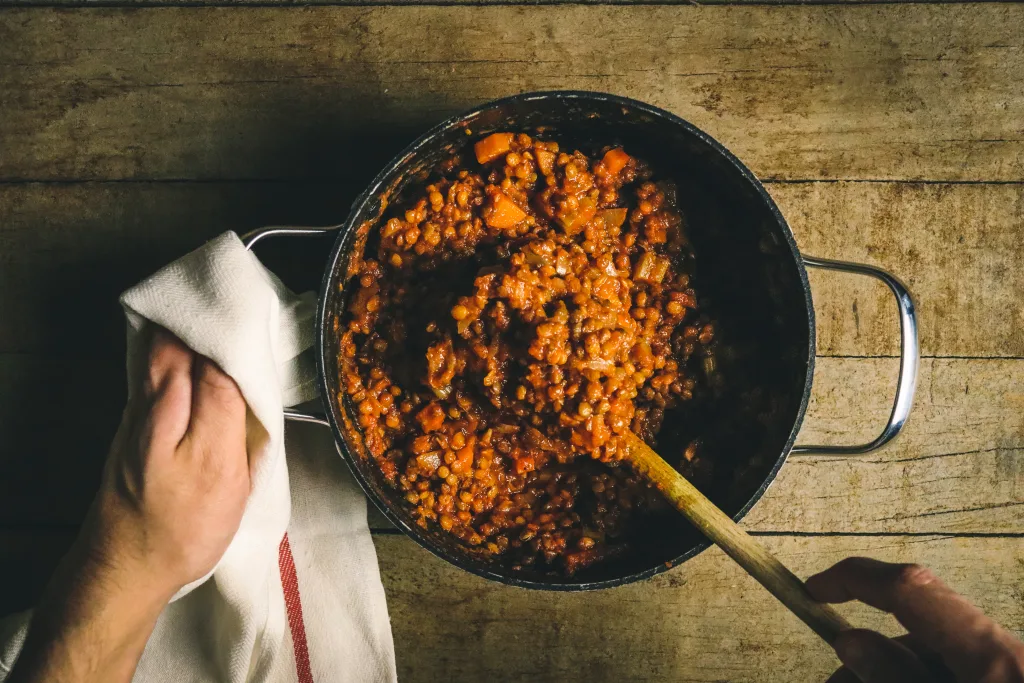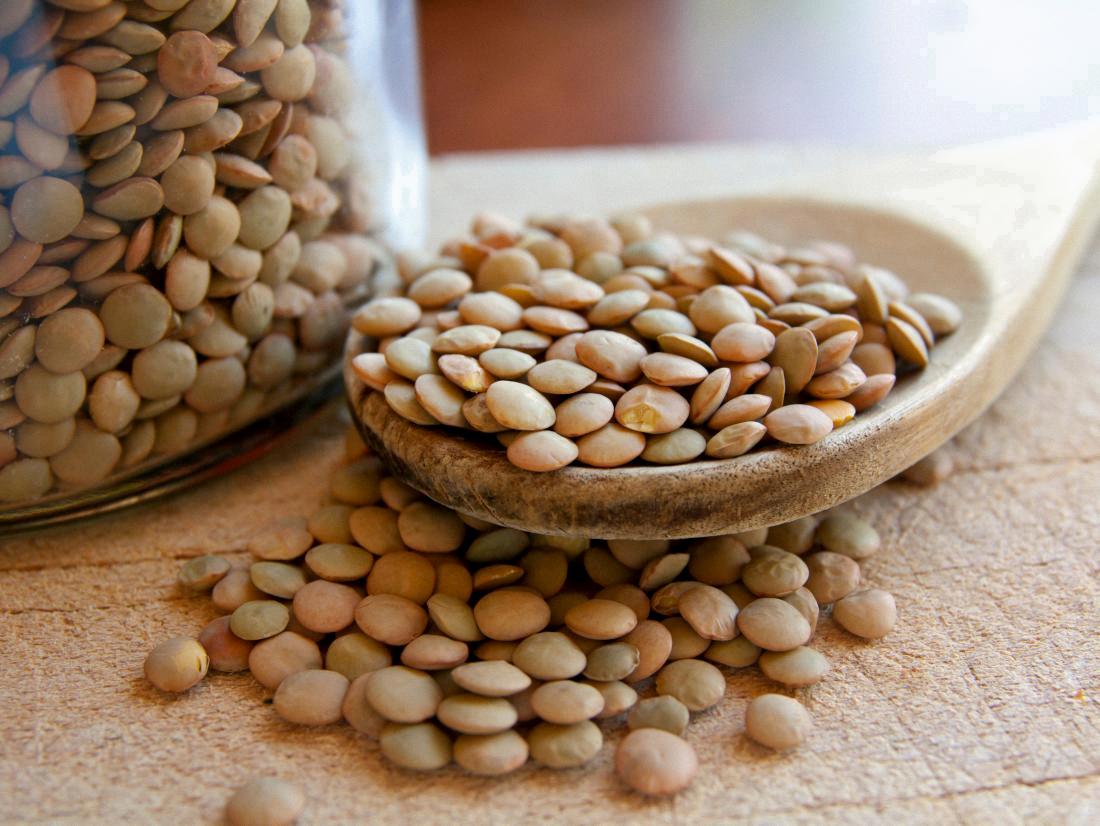Lentils are one of the most versatile and nutritious foods available, but many people wonder if they are considered a grain. The answer is no – lentils are not a grain. But don’t let that stop you from adding them to your diet! Lentils are actually part of a larger family of plants called legumes, which includes beans and peas.
Though they may look similar to grains like rice, quinoa, and barley, lentils contain different nutritional qualities than grains. They are high in protein, fiber and folate while being low in fat – making them an excellent source of nutrition. A single serving of cooked lentils provides 12 grams of protein, making them an especially great choice for vegetarians or vegans looking to get more protein in their diets.
Lentils also contain slow-digesting resistant starch that delays the absorption of carbohydrates with blood sugar-lowering effects. They also provide prebiotics which feed gut flora to help prevent digestive diseases.
Though lentils may not be a grain, they have many benefits that make them worth incorporating into your diet. Adding more lentils to meals can help boost nutrition withut adding extra calories or fat – plus they’re easy to cook and incredibly delicious! From soups and salads to stews and sides, there’s no limit to how you can use this versatile legume in your cooking repertoire. So don’t be afraid to give lentils a try – you won’t regret it!
Are Lentils Grains or Legumes?
Lentils are a type of legume, not a grain. Legumes are a family of plants that produce pods with seeds inside. Lentils are an edible seed that come from a variety of species within the legume family. They are small and round, usually about the size of a dime or nickel and come in many colors including green, brown, black, yellow and red. Lentils have been consumed for thousands of years and offer an array of health benefits due to their high fiber content, protein content, and essential nutrients like folate, potassium, iron, magnesium and zinc.

Are Lentils a Protein or a Grain?
Lentils are legumes and not grains. They are high in protein, with a ½ cup serving of cooked lentils providing about 12 grams of protein. Lentils are an excellent plant-based source of protein, fiber, and essential minerals and vitamins. Unlike grains, lentils do not cntain gluten, which makes them suitable for those with gluten sensitivities.
The Benefits of Eating Lentils for Gut Health
Yes, lentils are excellent for your gut health. Lentils are packed with dietary fibre, which helps to keep your digestive system running smoothly and keps you regular. They also contain slow-digesting resistant starch that delays the absorption of carbohydrates and helps to lower blood sugar levels. This is beneficial for those who have diabetes or pre-diabetes. Additionally, lentils are a great source of prebiotics, which help to feed beneficial gut flora, thus helping to prevent digestive diseases such as irritable bowel syndrome. As a result, consuming lentils on a regular basis may help keep your gut healthy and functioning optimally.
What Is a Lentil?
Lentils are a type of legume, which is a plant whose seeds are contained in pods. They are small, lens-shaped seeds that come in various colors such as green, brown, red, yellow and black. Lentils have become popular over the years due to their high protein content and ease of preparation. Because of their high nutrient content, lentils are considered a superfood and have been used for centuries as a source of dietary nutrition. They also provide an excellent source of fiber and B vitamins. Lentils can be used in soups, stews, salads or as a side dish. Additionally, they can be ground into flour to make flatbreads or baked goods like muffins and cookies.
Are Lentils Part of the Grain Family?
Yes, lentils are part of the grain family. Lentils are a type of pulse, which is a term used to describe grain legumes that are harvested for their seeds. Lentils are small, lens-shaped seeds that come in a variety of colors such as red, brown, green, and black. Pulse crops have been cultivated for centuries around the world for their nutritional vale and can be used in a wide variety of dishes.

What Foods to Avoid on a Grain-Free Diet
A grain-free diet typically excludes all grain-based foods, including breads, baked goods, pastries, noodles, and pasta. Cereals, oats, couscous, quinoa, barley, bulgur wheat and other grains should also be avoided. Additionally, any processed foods that cntain wheat or other grains should be avoided. These include crackers, cereal bars and breakfast cereals. Other food items to avoid while on a grain-free diet include:
• Processed snack foods such as chips and popcorn
• Baked goods such as cakes and pies
• Any type of flour or flour products such as bread crumbs
• Processed starches like cornstarch or tapioca starch
• Granola bars
• Beer
• Pancake mixes
• Pizza crusts
• Croutons
• Some condiments like soy sauce
• Many packaged sauces and dressings that cotain wheat flour or other grains as thickeners
Finally, it is important to read food labels carefully in order to identify hidden sources of grains in processed foods.
Are Lentils Grain-Free?
Lentils are a type of legume, not a grain. As such, they are naturally free from gluten, which is only present in three grains (wheat, barley and rye). While lentils do not contain gluten themselves, be aware that some varieties may be processed in the same facilities that process gluten-containing grains. If you’re on a strict gluten free diet or have an allergy to wheat, barley or rye, it’s best to double check the label and/or contact the producer before consuming lentils.
Comparing the Health Benefits of Lentils and Beans
Both lentils and beans are healthy and nutritious options for meals. Lentils are a great source of plant-based protein, fiber, and micronutrients like folate, iron, potassium, and magnesium. They also have a low glycemic index which can help with blood sugar control. Beans are also high in fiber and protein, as well as several important micronutrients like folate, vitamin B6, zinc, magnesium, manganese, phosphorus, and iron.
When it comes to health benefits, both legumes offer similar advantages. Lentils conain slightly lower levels of indigestible sugars compared to beans which may reduce the risk of gas production while still providing a good source of dietary fiber. Beans are slightly higher in carbohydrates than lentils but overall the nutritional values of each are comparable when eaten in the same portion size. Ultimately it is up to individual preferences when deciding which one to include in meals more often or try out different combinations for variety.
Are Chickpeas a Grain?
Chickpeas, also known as garbanzo beans, are a type of grain legume that are widely grown and consumed around the world. While they are not technically a grain, they can be used in place of grains in many recipes and make excellent additions to salads, soups, and stews. Chickpeas are low in fat and high in protein, making them an excellent source of both essential nutrients. Additionally, they’re a great source of dietary fiber and complex carbohydrates, making them a filling yet healthy addition to any meal.

Source: medicalnewstoday.com
People Who Should Avoid Eating Lentils
Lentils can be a healthy addition to many diets, however, some people should avoid eating them. People with poor kidney function are particularly at risk for negative side effects from eating lentils, and should limit their intake or avoid them altogether. People with existing digestive issues may also want to limit the amount of lentils they eat, as the strong spices used to cook them can worsen symptoms. Pregnant women should also talk to their doctor befre adding lentils to their diet.
Disadvantages of Eating Lentils
Eating too many lentils can cause digestive discomfort due to their high fiber content. While fiber is beneficial for digestion, it can be difficult to break down and can cause gas, bloating and cramping when consumed in large amounts. Additionally, lentils are rich in carbohydrates and calories, so eating too many can lead to weight gain. For those with low-FODMAP diets or certain food allergies, lentils may not be the best choice as they are legumes and contain compounds that culd potentially trigger an allergic reaction or digestive upset. Finally, lentils have a high concentration of antinutrients which can interfere with the absorption of some essential vitamins and minerals.
Are Lentils an Inflammatory Food?
No, lentils are not an inflammatory food. In fact, they are high in fiber and magnesium, both of which have been found to exert anti-inflammatory effects in the body. Fiber helps by binding to inflammatory molecules and carrying them out of the body through the digestive system. Magnesium helps regulate inflammation by activating certain enzymes and proteins that suppress inflammation. Lentils are also a great source of plant-based protein, which can help support overall health and well-being. All these factors make lentils a great choice for an anti-inflammatory diet.
Are Lentils a Carbohydrate or Vegetable?
Lentils are both a carbohydrate and a vegetable. Lentils are part of the legume family, which includes beans and peas, and they provide complex carbohydrates as well as dietary fiber. They are also a great source of protein, potassium, and other vitamins and minerals. When cooked, lentils have a slightly sweet flavor and can be used in salads, soups, casseroles, or as a side dish. For those looking to increase their vegetable and whole-grain intake without breaking the bank, lentils are an excellent choice!

Digestibility of Lentils
Lentils can be hard to digest, especially for people with IBS. The FODMAPs (sugars) in lentils can contribute to excessive gas and bloating. However, soaking or spouting the lentils before eating them can help make them easier to digest. This helps break down the FODMAPs and makes the lentils easier on your digestive system.
Are Legumes Considered Grains?
No, legumes are not a grain. Legumes are an edible seed from the family of Fabaceae and are also known as pulses. These include beans, peas, lentils, chickpeas and peanuts. On the oter hand, grains such as wheat, rye, oats and barley are the seed of a grass species from the family of Poaceae. Even though both grains and legumes have similar nutrient profiles and can be used in many of the same recipes, they are different plants with different botanical classifications.
Conclusion
In conclusion, lentils are not grains but raher a type of legume. They are an excellent source of protein, fiber, folate, potassium, iron and magnesium. Lentils are also rich in resistant starch that can help to stabilize blood sugar levels and prebiotics that promote healthy gut flora. With all these benefits, lentils should be included in your diet for improved health.
